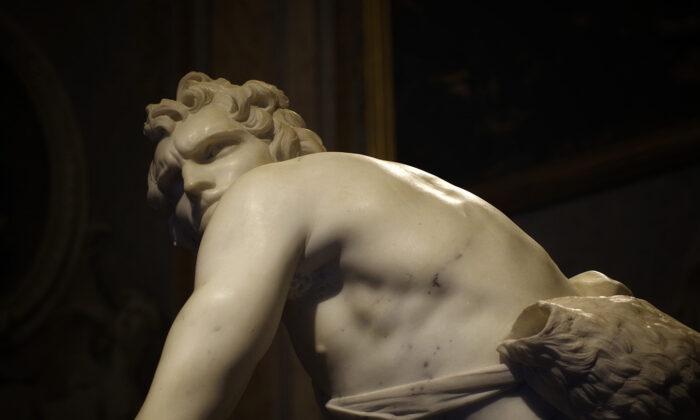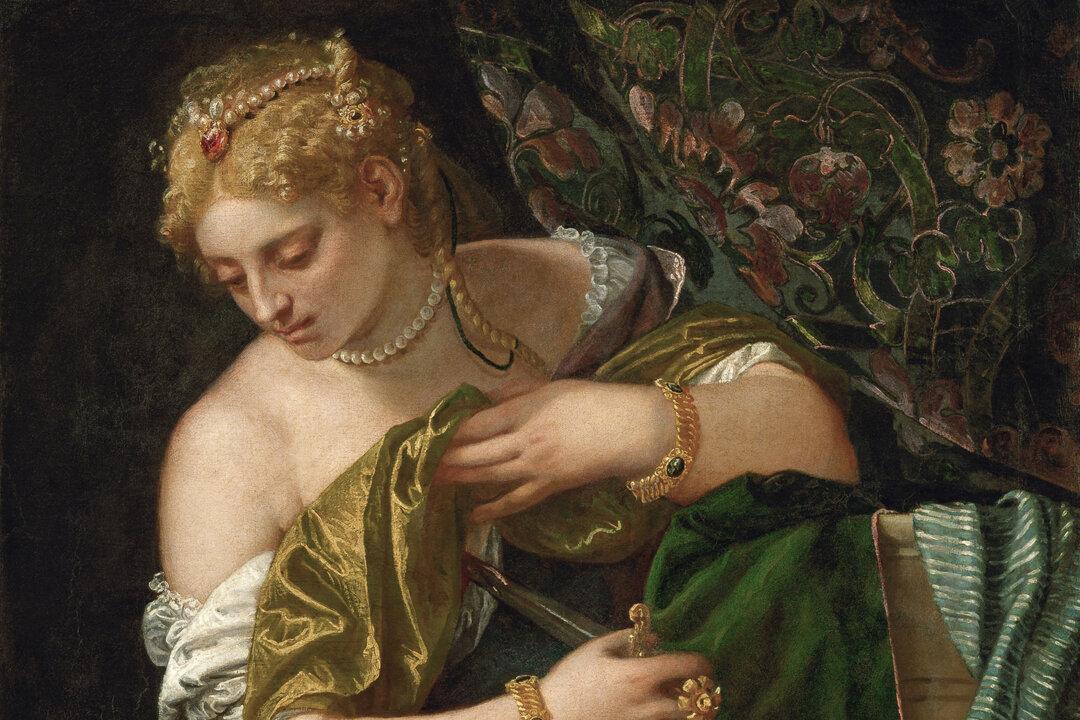If artists as brilliant as Michelangelo and artworks as definitive as his “David” are rare, the year marking the 120th anniversary of that sculpture’s unveiling saw an event almost unparalleled in artistic history. For the first and maybe the last time, there was an artist who could rival Michelangelo both as a sculptor and a master of multiple art mediums. And in 1624, that artist—Gian Lorenzo Bernini—unveiled a “David” of his own.
Rome’s Foundations

In the 17th century, Rome was an ideal place for the younger Bernini to be educated in art. A century earlier, the masters of the Renaissance had still been refining their techniques, learning from recently discovered ancient relics, and creating works that would serve as models for the next generation of masters. By Bernini’s day, those works were at the top of the artistic canon.
Increasingly, however, artists were building on those foundations in creative and original ways rather than merely imitating earlier works. Paintings by Caravaggio and Rubens even performed the almost impossible feat of matching those of the Renaissance masters. In sculpture, Michelangelo continued to tower above all others until Bernini appeared on the scene.
It did not take artists and patrons long to see Bernini as, in the words of Pope Paul V, “the Michelangelo of his age.” At one point Cardinal Maffeo Barberini, later Pope Urban VIII, even considered hiring the 19-year-old prodigy to complete a sculpture left unfinished by Michelangelo himself—which nobody had previously dared to touch. Unfortunately, we have no record of what the sculpture was or if Bernini ever completed it.
The Two Davids

Classical Renaissance art, as exemplified by Michelangelo and Raphael, leans toward intellect and restrained emotions, whereas the Baroque art of Caravaggio and Bernini veers more toward emotional intensity. In narrative works, classicists depicted figures paused before or after an action has occurred. Baroque artists generally preferred expressing figures in the middle of dramatic action.
Even sharper differences mark the schools’ approaches to religious and historical figures of earlier eras. Classicists would illustrate their figures exemplifying physical perfection as a metaphor for their moral qualities, using their subjects as archetypes of virtues. Baroque artists instead focused on their subjects as individuals, trying to capture accurate emotions in action.

Bernini and Caravaggio

The similarities between Bernini’s statue and Caravaggio’s painting “David With the Head of Goliath,” are just as notable as the differences between the two carved Davids. Taking place just after Goliath’s death, Caravaggio’s painting has David’s face suggesting relief and mental recuperation. It can even seem as though David is in the act of lifting Goliath’s head rather than holding it still—an impression that would accord with most of Caravaggio’s work. And if such similarities do not go beyond the broad contours of Baroque art, the relationship between the styles of the two artists is made clearer in comparisons of further works.

Caravaggio’s painting “Saint Francis of Assisi in Ecstasy” and Bernini’s sculpture “Ecstasy of Saint Teresa” have a closely themed relationship. Both artworks depict saints collapsing in ecstasy while in the presence of an angel, and both have strong emotional qualities—whereas Caravaggio chose tenderness and Bernini dramatic intensity. St. Francis had a vision of an angel at the time he received the stigmata: five wounds in his hands, feet, and on the side near his heart, the parts of the body where Christ was nailed to the cross and pierced with a lance. During Saint Teresa’s vision, an angel used a lance to pierce her heart several times.

Even closer similarities exist between Caravaggio’s artistry and Bernini’s often-forgotten work as a painter. Caravaggio’s “The Calling of Saints Peter and Andrew” and Bernini’s “Saint Andrew and Saint Thomas” could be mistaken as paintings by the same artist. These paintings have the same naturalistic depiction of their figures’ features and detailed hair and similar muted colors and tenebrism (dramatic contrast between light and dark).

While Bernini took his stylistic lead from Caravaggio, it will always be Michelangelo to whom he will be compared. Michelangelo and Bernini were both history’s greatest sculptors and the only well-known artists to have achieved the highest excellence in all three fields of art: architecture, painting, and sculpture. In that combination of height, breadth of achievement, and brilliance, Bernini was Michelangelo’s only successor.





